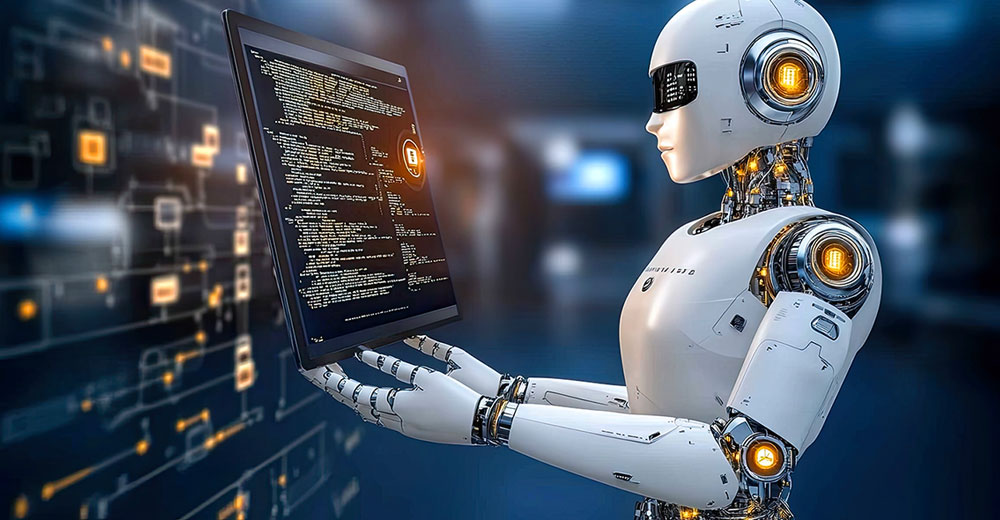Recent advancements in artificial intelligence (AI) have ignited a transformative wave across various industries, propelling innovation and reshaping operations. As we transition into 2024, a significant acceleration in AI capabilities has the potential to disrupt markets and create new paradigms in business and technology. However, this rapid expansion carries inherent risks, particularly when AI systems operate without appropriate human oversight.
The Evolution of AI Technology
Generative and agentic AI technologies are already improving how we interact with and create sophisticated media content. Notably, AI-driven healthcare tools are beginning to surpass human professionals in specific diagnostic tasks, signaling a profound shift in health service delivery. As stated by Anders Indset, a noted author and deep-tech investor, we are now on the verge of realizing fully autonomous humanoid robots, a development long anticipated in the tech community.
“This year has been marked by a surge in interest surrounding large language models (LLMs),” Indset shared with TechNewsWorld, “but the future will likely highlight groundbreaking advancements in autonomous humanoid agents.” The coming years will likely see increased integration of these systems in various sectors, advancing human-robot interactions and introducing models such as robotics-as-a-service (RaaS).
AI’s Influence on Cybersecurity
The Rise of Cyber-Biosecurity
In the realm of cybersecurity, AI is poised to become a crucial asset, especially in the context of modern cyberwarfare, as outlined by Alejandro Rivas-Vasquez from NCC Group. Enhanced ML capabilities may lead to more sophisticated cyber threats that extend beyond traditional boundaries, affecting civilian life due to interconnected technologies.
AI will not only safeguard digital infrastructures but will also protect personal health through advanced medical and consumer technologies. However, Bobbie Walker, also from NCC Group, warns of significant risks accompanying these advancements.
“The exploitation of neural interfaces could allow hackers to manipulate individuals’ actions and perceptions,” Walker cautioned, also emphasizing privacy concerns surrounding health data managed through such technologies. It’s vital to develop frameworks combining technological innovation with stringent privacy and bioethical standards to navigate the growing complexity of cyber-biosecurity.
AI-Driven Backup Systems in Disaster Recovery
As organizations increasingly turn to AI for disaster recovery processes, concerns arise over the reliability of these systems. Sebastian Straub from N2WS notes that while AI can enhance operational efficiencies by automating backup procedures, the risk of errors is amplified as machines take on more significant roles.
“We will see serious compliance issues as organizations depend solely on AI for decision-making in disaster recovery,” he warned, stressing the necessity for human involvement to maintain accountability and trust in these systems.
AI and the Future of Creativity and Education
Transforming Communication and Learning
AI tools such as ChatGPT are revolutionizing how individuals craft and refine their communication. Eric Wang from Turnitin highlights that users are learning to harness AI rather than rely on it for completing tasks, ultimately engaging more deeply with their content creation processes.
The future will see a recognition of writing skills as essential across various domains, supported by AI’s ability to identify learning gaps in educational contexts. Wang anticipates a shift towards a more humanized interaction with technology as students and professionals alike adapt to integrate these advanced tools into their work.
Addressing Risks Within AI Models
As AI becomes more prevalent and accessible, concerns about the detection of malicious software embedded in AI models are increasing. Michael Lieberman, from Kusari, warns of a surge in covert attacks exploiting free models that may be unwittingly used in organizational settings.
These threats, including data poisoning aimed at pre-trained LLMs, could pose significant risks to companies relying on such technologies. As we approach 2025, the industry may need urgent reforms and alliances to bolster defenses against these evolving threats.
“Without a concerted effort to prioritize security, major breaches akin to earlier high-profile incidents could precipitate more serious shifts in corporate attitudes toward AI security,” warned Wang.

